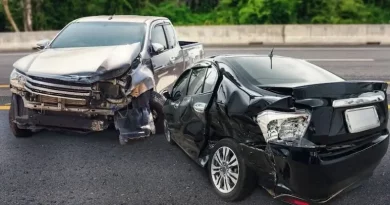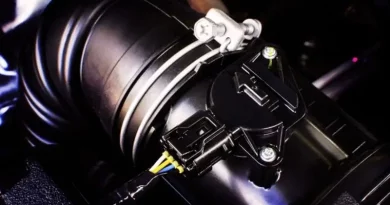5 Noteworthy Injuries You Might Sustain in a Car Wreck
You can live without a car, but it’s tough. As an adult, you must live in a place with public transportation options if you don’t have a license or own a vehicle. You might also work from home to avoid the daily commute.
Cars are a necessary evil since you must pay for their upkeep, insurance, and gas if you don’t own an electric vehicle. You must also watch out on the road since other drivers might let their smartphones distract them, drive faster than the law allows, or experience road rage incidents.
If you do wreck your car, you might injure yourself. Let’s discuss some injuries that might happen if you don’t exercise caution on the roads and obey all traffic laws.
Whiplash
Over three million Americans suffer whiplash each year. That makes this injury fairly common. Whiplash usually occurs when a car strikes your vehicle from behind, and your head and neck snap backward and forward sharply.
This abrupt motion hurts your neck. You might suffer a vertebrae strain or some soft tissue damage. You must see a doctor following an accident, and they can diagnose your condition conclusively.
Usually, you get over whiplash as time passes, but it’s painful in the meantime. You can ice your neck down or use a heat wrap. You might use over-the-counter pain medication. In extreme cases, you may have a doctor give you stronger pain meds.
You must exercise caution with opioids, though. Most doctors won’t hand them out for whiplash, but if you get some, use them sparingly. Opioid addiction remains problematic across the country.
Broken Bones
A fender bender probably won’t break any bones. If you sustain bone fractures, a car likely hit you head-to-head or T-boned your vehicle. Faster speed collisions sometimes cause broken bones as well.
Broken bones usually heal, but you might wear a cast for months while they do. You may need surgery so a doctor can reset a bone fracture, too.
When you get the cast off, you must usually do physical therapy exercises. You can regain movement in the injured limb, but it’s not easy. You will feel stiff, and you’ll experience pain as well. Often, you can get your full movement range back, but it won’t come without a fight.
Cuts, Scrapes, and Bruises
Cuts, bruises, or scrapes happen in car wrecks that jostle you. The seat belt might bruise you, or you may strike the dashboard, even with your seatbelt on. Flying glass can cut your face, hands, arms, or legs.
Usually, these injuries heal in weeks, or months in extreme cases. After car wrecks, you might have some unsightly wounds, but they seldom threaten your life.
A doctor can treat them with antiseptic ointment and bandages. If you have some deeper cuts, the doctor might give you some stitches.
Usually, you will recover without incident, but sometimes, if you feel self-conscious regarding your scars from a car wreck, you can pursue plastic surgery. Plastic surgery doctors work wonders these days, and they can sometimes make your scars less visible.
Internal Injuries
Internal injuries sometimes happen in car wrecks. When they do, usually the seatbelt holds you in place, but the sudden impact jolts you. The seatbelt can injure your internal organs. You might also suffer internal injuries in multiple-car crashes.
Internal injuries cause problems sometimes because you might look okay, but you’re bleeding internally. Ruptures might not appear to the naked eye. You know about them when you cough up blood, feel pain, or start bruising from an internal source.
If you suspect internal injuries, that’s serious, and you must see a doctor right away. Many times, you’ll know you’ve injured yourself soon after the car wreck. Hopefully, the doctor notices the injury and takes action quickly.
They might operate if necessary. Something like a lacerated internal organ can kill you in extreme cases, so you can’t delay. You need medical treatment once you determine what’s happening.
Head Injuries
Head injuries happen in car wrecks if you hit your head on the dashboard. You might strike your head on the door next to you or on the car’s roof if the vehicle flips over.
Head injuries are sometimes serious. If you experience headaches after a car wreck, notice significant facial swelling, or you bleed from the eyes, nose, or ears, you might have a head injury. A doctor can look you over and figure out whether you need emergency surgery.




